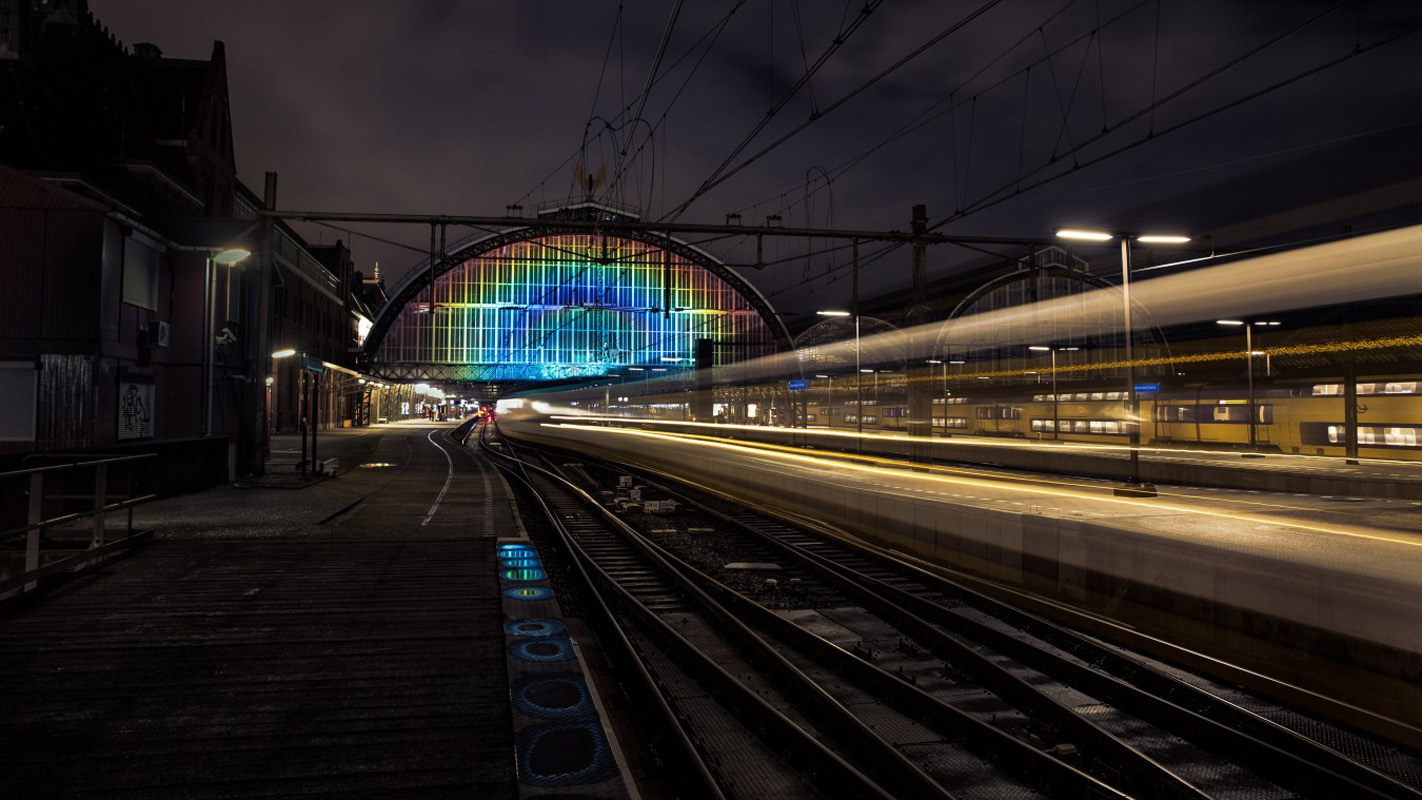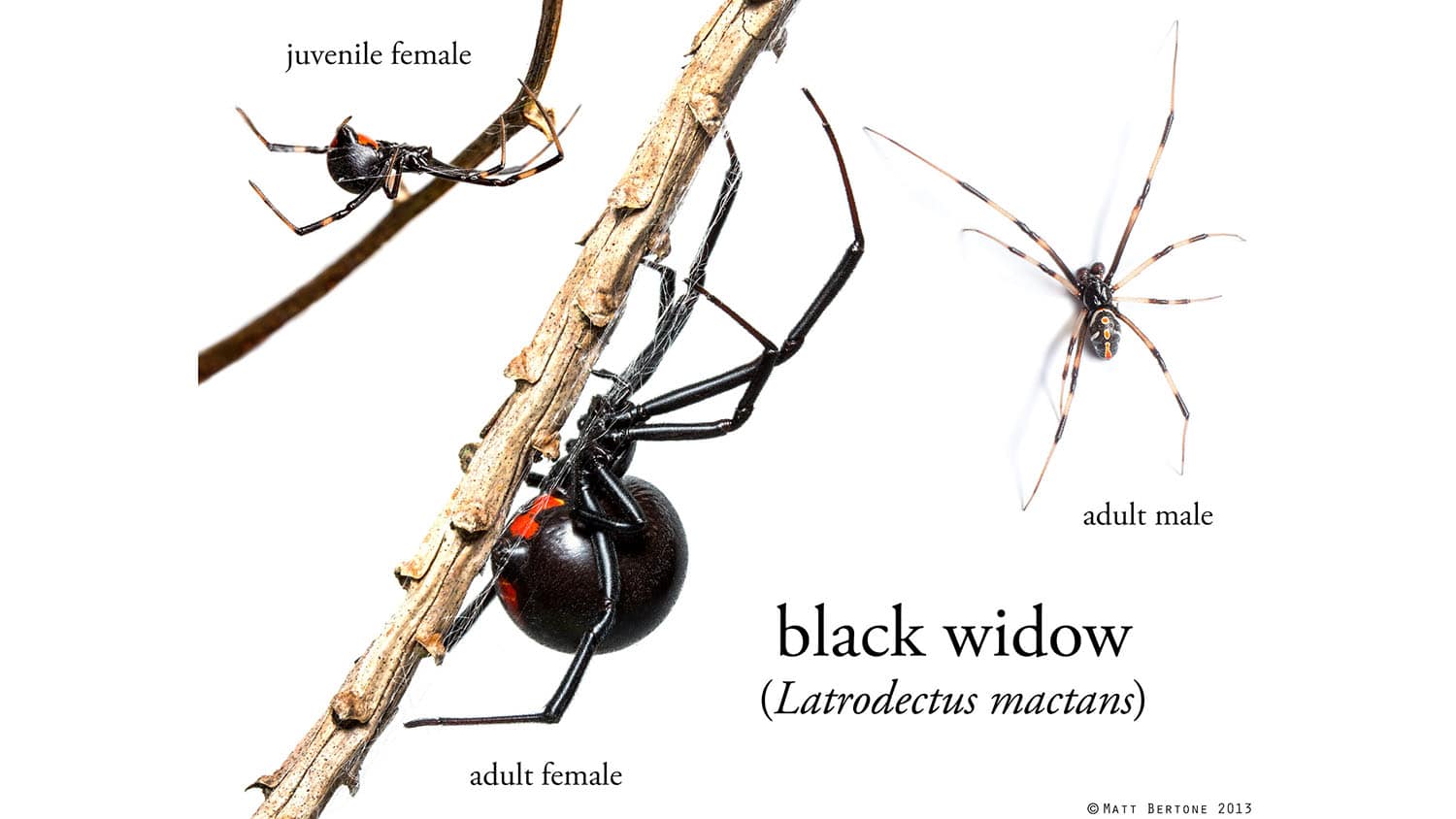NC State Innovation Lights Amsterdam’s Rainbow Station

If you’re passing through the Amsterdam Central train station you may be pleasantly surprised to see a vibrant rainbow projected on the large arch that spans over its platforms. It’s the “Rainbow Station” project by artist Daan Roosegaarde – and it was made possible by technology adapted specifically for the project through collaboration with NC State researcher Michael Escuti and ImagineOptix Corporation, the company he founded to pioneer patterned liquid crystal optic technologies.
What Escuti developed was a “spectral filter,” based on a type of technology called geometric phase holograms. In layman’s terms, it’s a filter that takes in bright white light and turns it into a rainbow, “dispersing” the colors in a precise, controlled way. Spectral dispersing elements are essential to applications in fields such as astronomy, optical telecommunications, chemical and biological sensing, semiconductor fabrication, and nanotechnology.

Conventional techniques to create a rainbow, such as a prism or a regular diffraction grating, have at least one of two disqualifying limitations for this project: either the color dispersion isn’t wide enough (meaning the colors would be washed out) or the majority of the light would “leak” (meaning it would go almost anywhere but into the rainbow). But Escuti’s technology puts about 99 percent of the light into the rainbow, allowing only about one percent of the light to leak out.
“That was particularly important for this installation, because Roosegaarde is using a powerful spotlight and any leaked light could be unsafe for train operators or passengers,” Escuti says. In other words, they didn’t want leaked light to temporarily blind anyone.
The work was done by Escuti, in conjunction with Studio Roosegaarde and collaborators at NC State and Leiden University. Video of the project is available at Roosegaarde’s site.
Roosegaarde had a vision for what he wanted to achieve with the installation and reached out to researchers Frans Snik and Michiel Rodenhuis at Leiden. Snik then reached out to Escuti, who he was already working with to develop astronomical instruments and technologies.
“They wanted a rainbow pattern with a specific arched profile and dispersion of colors, without leaked light blinding passersby – which was determined to be impossible with existing technology,” says Escuti, who directs the Opto-Electronics and Lightwave Engineering Group at NC State. “So we had to make something new.”
To meet the artist’s vision, Escuti and his team at ImagineOptix turned to their line of geometric phase holograms, which are thin films of liquid crystal that control the angle and color dispersion of lightwaves. The best-studied member of this family is a polarization grating, which can be thought of as a pattern of vertical lines representing the orientation of liquid crystal molecules.
However, since the installation required a precise rainbow arch and color dispersion, Escuti and his team developed a modified polarization grating, where the parallel lines are in the form of concentric circles. This geometric phase hologram directs the light into a complete, full-circle rainbow. But by manipulating the input light’s polarization, this element produces only the upper portion of the circle and suppresses the lower, creating the characteristic arch of a common rainbow.

In addition to limiting light leakage, the project posed another significant technical challenge. Namely, the technology needed to provide a wide dispersion of the rich, saturated colors that Roosegaarde wanted – which was particularly problematic for the full range of colors between deep red and violet.
“We achieved a wide dispersion of clear, crisp colors by incorporating specific design characteristics into the geometric phase hologram,” Escuti says. “Specifically, we used a two-dimensional pattern with a feature size of 1.5 microns, meaning the concentric rings are 1.5 microns apart. This really separates the different wavelengths of light, making them more distinct. One of the tools we used to create these features, a direct-write laser scanner, is something my students, postdocs and I created at NC State.”
Directing the full range of colors between deep red and violet onto the train station façade presented a different problem, since very few technologies are capable of manipulating this wide range of colors within a single layer.
“We addressed this by incorporating multiple layers of liquid crystal into the geometric phase hologram,” Escuti says. “It’s a structure we developed at NC State called a multi-twist retarder, and in this case we used it to reach an amazingly wide range of color. It actually includes many more colors than our typical smartphones and TVs can produce, or that our digital cameras can capture.”
Once the design work was completed at ImagineOptix, Escuti worked with graduate students in his lab, Leandra Brickson and Kathryn Hornburg, and postdoctoral scholar Jihwan Kim, to fabricate a “master” of the geometric phase hologram. The master was then replicated by ImagineOptix to create the final version for use at the Amsterdam Central train station, another unique process created at NC State.
“We sent the technology to Roosegaarde in early November, and I can’t wait to see it in action,” Escuti says.
- Categories:


